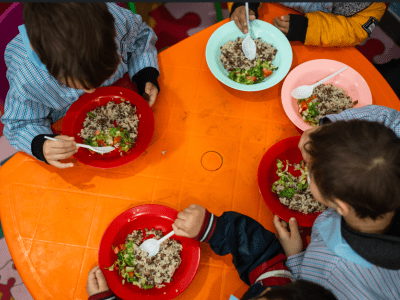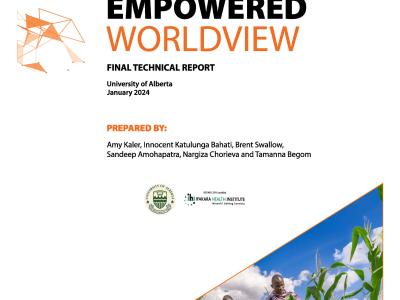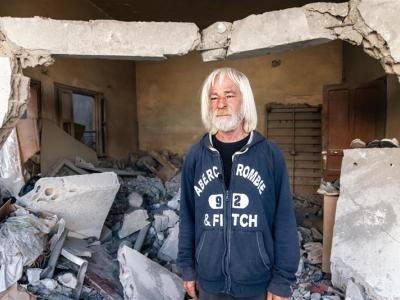publication / February 20, 2025
Country Profile - World Vision Jerusalem - West Bank - 2025
For over 50 years, World Vision has worked to nurture Palestinian children, improve their resilience and bring them hope. Take a look at this short report to learn more about our strategy priorities, our approaches and our achievements in 2024.
publication / April 16, 2025
World Vision - SitRep - Emergency Response West Bank - Feb-Mar25
Due to unprecedented levels of violence, restrictions on movement and economic challenges, a major humanitarian crisis is ongoing in the West Bank. To support communities, World Vision has continued its emergency response in february and March 2025, reaching 193,000 people including 110,000 children in 7 governorates. Read our report to learn more about our response.
publication / March 10, 2025
World Vision MEER Regional Brief: FY24 (between 1 October 2023 - 1 October 2024)
We cannot do it alone. Empowering local actors to lead the response, recovery, rehabilitation and development in their countries is a top priority, and building their capacity supports us to achieve our goals of ensuring every girl and boy has what they need to live a life in all its fullness. We partner with supporters, governments, local communities, faith leaders, civil society, faith-based organisations to support the needs of children and their families throughout the region
publication / March 5, 2025
Middle East Crisis (MEC) Response |LEBANON SITREP #12
Following the second deadline for the cessation of hostilities on 18 February 2025, the country to the south of Lebanon withdrew from population centres in southern Lebanon while maintaining a military presence in five strategic locations along the Blue Line. Despite these developments, military tensions persisted, with reports of demolitions and shelling in border villages before and after the withdrawal, resulting in civilian casualties, raising the total number to 4,200 civilian deaths since the escalation. Meanwhile, protests erupted in Beirut, Bekaa, and Mount Lebanon between 14 and 16 February over internal political disputes, further heightening instability in the country.
Humanitarian conditions remain critical, with 98,994 people still displaced outside their district of origin, while 950,652 have returned home despite extensive damage to infrastructure and limited access to essential services. Entire neighbourhoods, particularly in border villages, have been left in ruins due to sustained bombardments, with water networks, electricity grids, and medical facilities heavily damaged or rendered inoperable. Schools and hospitals have suffered significant destruction, depriving communities of essential healthcare and education services. Additionally, roads and bridges in affected areas remain impassable, further obstructing aid delivery and recovery efforts.
Lebanon is also facing an increasing humanitarian burden due to the arrival of 89,400 people from Syria into Baalbek Governorate, including 20,000 returning Lebanese, further straining already overstretched resources. With fluctuating displacement trends and ongoing security challenges, the country remains in a fragile state, requiring sustained international support to stabilise affected communities, rehabilitate vital infrastructure, and ensure access to essential services for those in need.
publication / February 20, 2025
Situation Report - December 2024 January 2025 - Emergency Response in the West Bank
In december 2024 and January 2025, World Vision provided humanitarian support to 101,000 people in 142 villages as part of our emergency response. Our response focused on community protection, mental health, access to health care and access to safe education.
publication / April 17, 2025
Triple Threat: Climate Change, Conflict and Hunger endangering children's lives
Climate change, violence, and hunger are trapping vulnerable children in poverty. This report explores their intersection and the urgent need for action.
publication / May 15, 2024
Annual Report 2023 - World Vision International Jerusalem - West Bank - Gaza
Overview of the key priorities, programmes and achievements of World Vision International Jerusalem - West Bank - Gaza in 2023.
publication / March 21, 2025
Empowered Worldview Final Technical Report 2024
Empowered Worldview has led to statistically significant improvements in measures of hope, self-efficacy and self-reliance. It has also led to statistically significant improvements in rates of child well-being as measured by stunting.
Empowered Worldview is likely to have a significant multiplier effect on child well-being as measured by stunting. The impact of EWV is greater in households where other indicators, addressed by other World Vision programs, are more positive. Factors that increase the positive impact of EWV on child well-being include the availability of food, access to health services, mothers’ own health and good child feeding practices.
publication / January 31, 2025
Lebanon Response Sitrep #11
The agreement on the cessation of hostilities has been extended until February 18. However, in the last week, at least 30 civilian casualties have been recorded. Access to over 70 villages in southern Lebanon remains restricted, preventing people from returning home and posing security risks for displaced populations attempting to rebuild their lives. Humanitarian actors continue to face significant access constraints, making it difficult to provide essential aid to affected communities. While the agreement continues to prevent a return to full-scale conflict, localised violence, military operations and security risks persist.
The humanitarian response remains strained, with significant funding gaps limiting aid distribution, infrastructure repairs and healthcare services. Food insecurity continues to rise, with 1.65 million people facing crisis-level food shortages and 201,000 in emergency conditions (IPC Phase 4). The destruction of agricultural land, market disruptions and logistical challenges are further deepening Lebanon’s economic crisis, affecting both displaced and host communities.
Despite the challenges, humanitarian actors are scaling up response efforts, repairing homes and shelters, providing warm clothes and heat, and restoring essential services. However, with only 58% of the 2024 Flash Appeal met, a sharp increase in funding is needed to meet growing humanitarian demands. Sustained diplomatic efforts and international support will be essential in preventing further deterioration and ensuring a comprehensive path toward recovery and peace in Lebanon.
publication / August 27, 2024
Early Childhood Development: Overview of World Vision Programmes 2024
Overview of World Vision's programmes on Early Childhood Development in the occupied Palestinian territory





